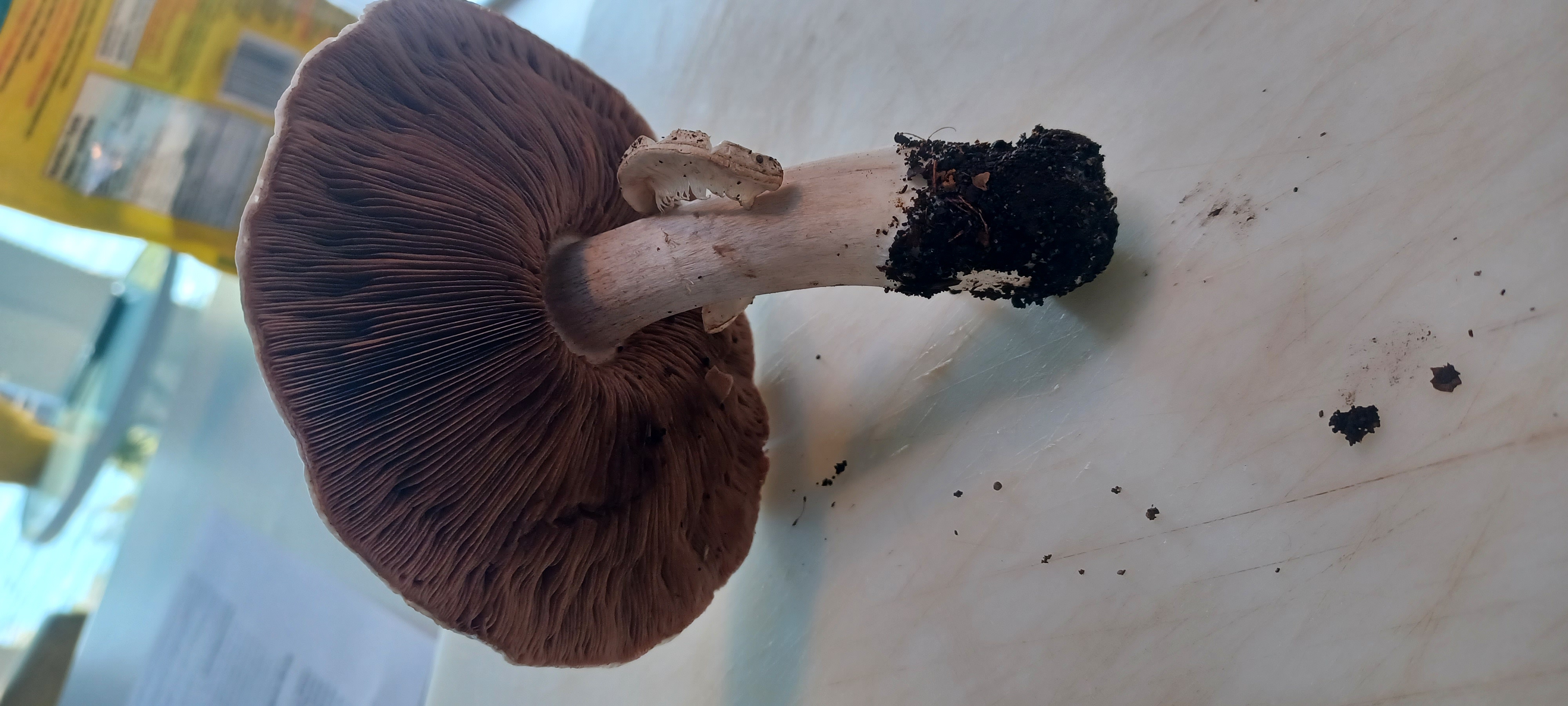Horse Mushroom
Agaricus arvensis
High Risk of Misidentification: Potential Agaricus Species

1 / 4
All Images (4)
Key Features
- Free
- crowded
- dark chocolate brown gills (mature)
- Robust
- pale white to tan cap surface
- Prominent superior annulus (ring) on the stem
- Stem base attached to soil
- suggesting terrestrial growth
- Gills do not attach to the stem
Color:
White to pale tan cap; Dark brown gills; White stem
Smell:
Unknown (Crucial diagnostic feature is missing)
Growth Pattern:
Single
Environment:
Soil
Habitat & Distribution
Habitat:
Likely grassy area, lawn, or field edge
Distribution:
Widespread across North America, common in coastal British Columbia.
Seasonality:
Summer to Autumn
Critical Features for Confirmation
- Odor (almond/anise vs. phenolic) is the primary diagnostic feature for Agaricus species and is unknown
- Staining reaction upon bruising the stem base is unknown
Economic Value
Market Demand:
Moderate - Edible species are popular but require careful identification.
Price Range:
N/A
Commercial Use:
None - Wild harvested only; high risk of confusion with toxic species prevents commercialization.
Similar Species
Yellow-staining Mushroom
Agaricus xanthodermus
Key Differences:
- Stains bright chrome yellow instantly when bruised, especially at the stem base
- Strong, unpleasant phenolic or carbolic acid odor
Meadow Mushroom
Agaricus campestris
Key Differences:
- Typically smaller and less robust structure
- Ring often less prominent or fragile
- Gills turn pink before turning dark brown
Recommended Action
Do not consume. Immediate testing for odor and stem base staining is required to rule out the toxic Yellow-staining Mushroom.